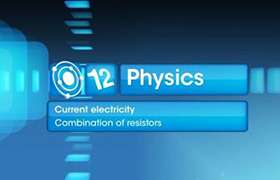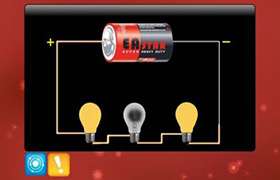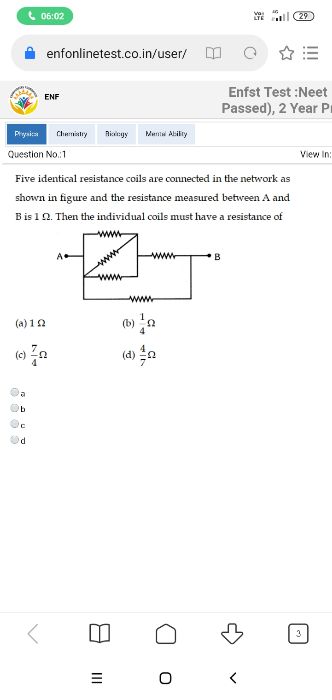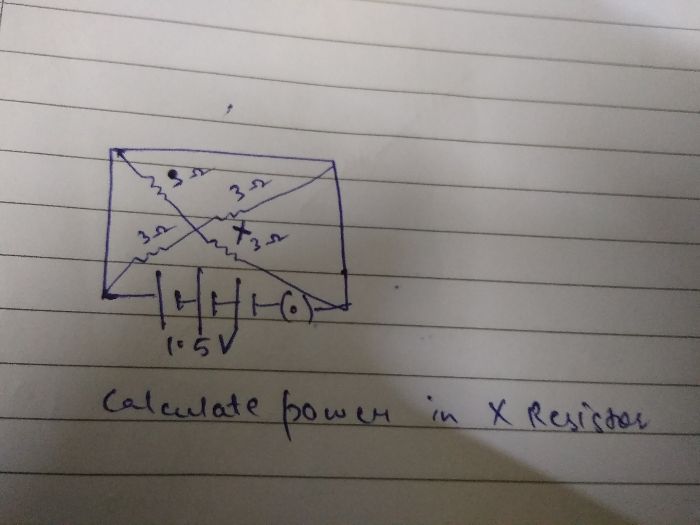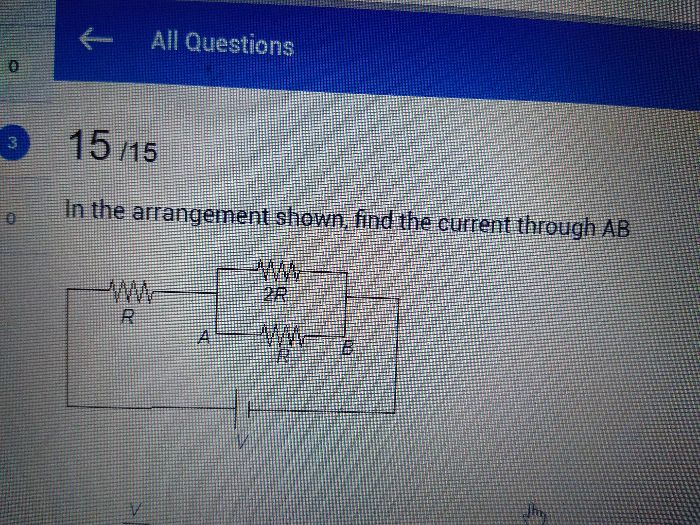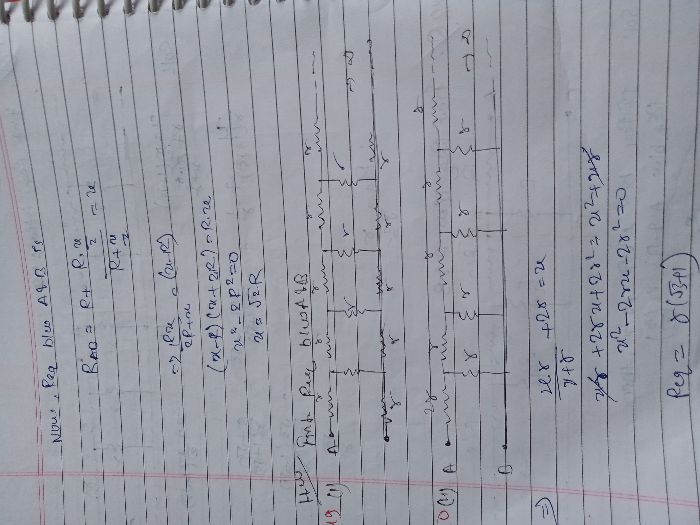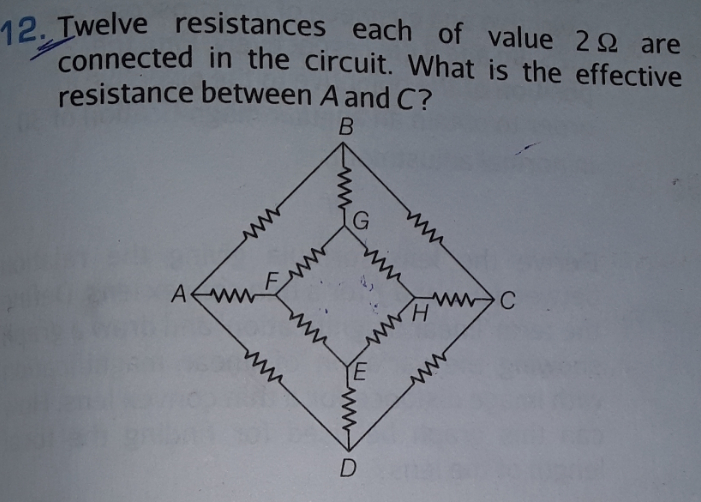CBSE Class 12-science Answered
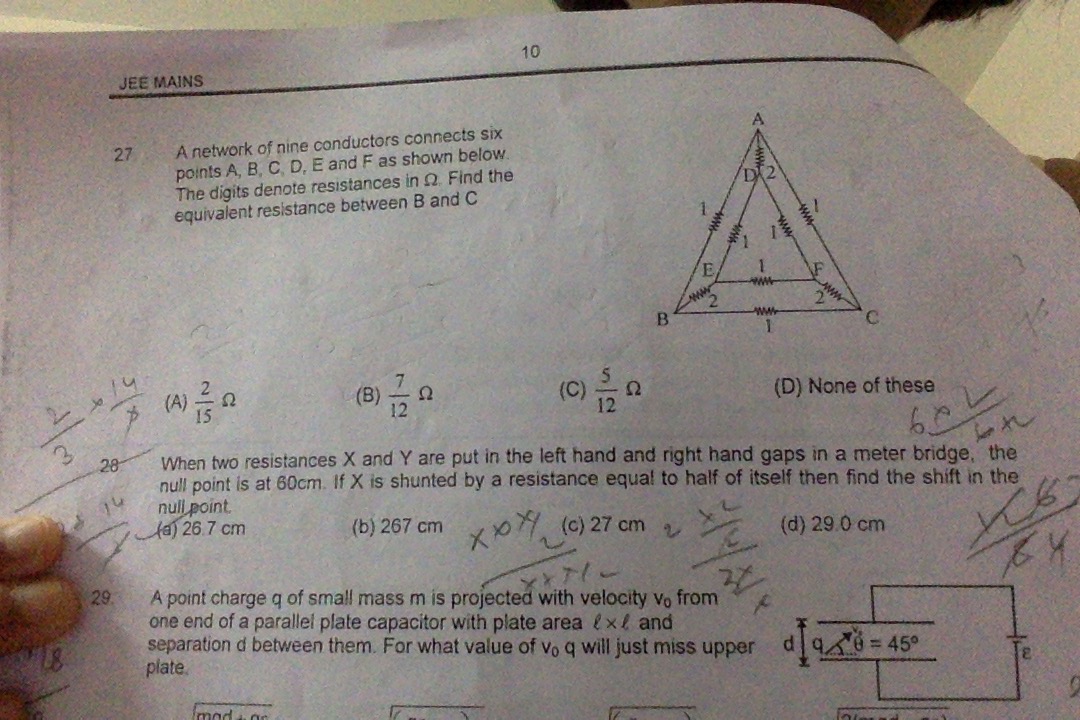
-Convert the internal triangular network of resistors DEF from delta to star.
-As all the resistors of DEF are same i.e 1 ohm, the resistances of the star connection is (1x1)/(1+1+1)=1/3 ohm.
-Now these star resistors are connected in series with the 2 ohm resistors shown in the diagram with your question between AD, BE and FC.
-Therefore, the original network will now be reduced to the outward triangle and a star network inside it each of 2+(1/3) = 2.33 ohm.
-The 1 ohm each, resistors of outer triangular network and the above mentioned resistors of 2.33 ohm are in parallel connected with each other.
-Now, the circuit becomes a single wire triangular network with each side having a resistor of (1/R)=(1/1)+(1/2.33) 0.7 ohm.
-Select any two sides of this triangular network, it is clear that they are connected in series with each other and those serial resistors are in parallel connection with the resistor of the third side.
-Resistors in series of the final triangular network: 0.7+0.7=1.4 ohm
-The 1.4 ohm is in parallel connection with 0.7 ohm
-Equivalent resistance of the entire circuit between B and C is 0.42 ohm i.e 5/12 ohm (Option 'C')

